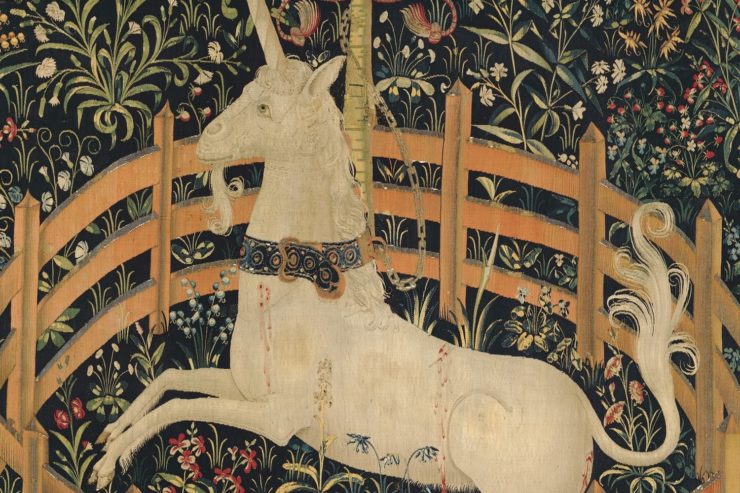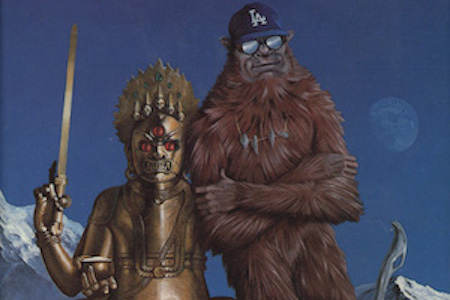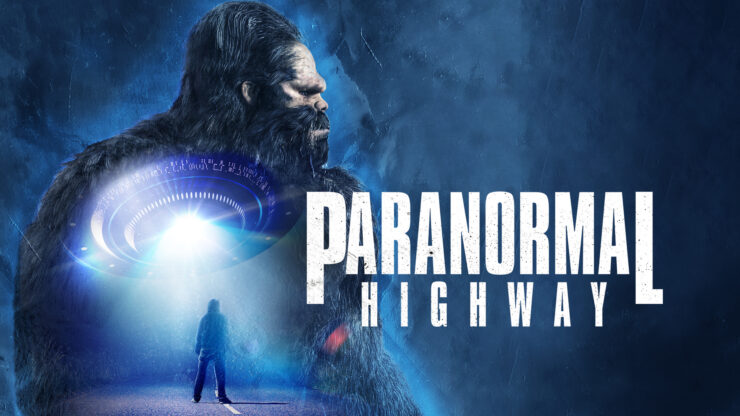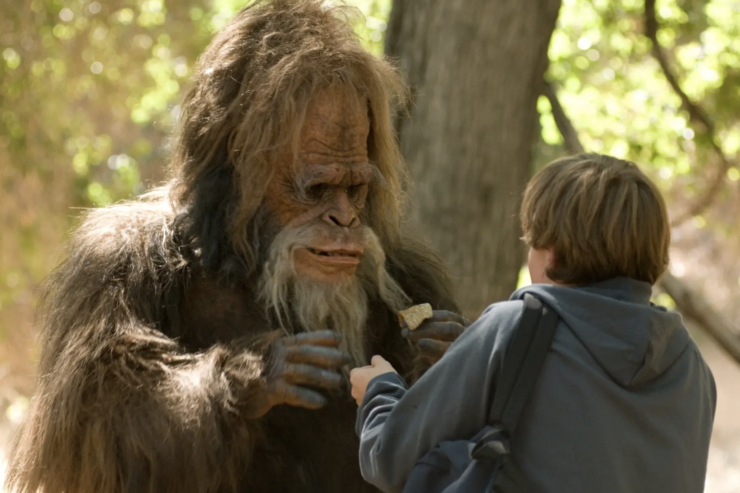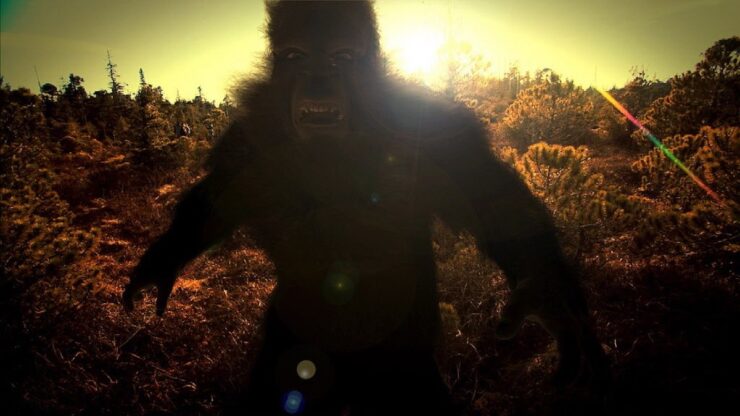The unicorn is one of the most iconic of all the mythical creatures our culture knows. It’s a myth and a legend. It’s a metaphor and allegory. It’s an entire marketing category aimed predominantly at preteen girls.
It’s ancient. It’s not just a Western phenomenon: the first we know of seems to have appeared in Mesopotamia. It’s been seen in India and China. The beast with the single horn may be an accident of perspective—a profile of an ox—or a fluke of perception, a rhinoceros as seen by an observer from a far country. It may even be a mistranslation of an original text, so that the Hebrew aurochs becomes the Greek monoceros and the Latin unicorn.
As the late Western Middle Ages shaded toward its Renaissance, the unicorn as we now know it came close to its final form. White, for purity. Armed with a long, straight, spiral horn, just like a narwhal’s horn. Cloven-hooved and tassel-tailed, more like a goat with a single horn than a horned horse. The horse came somewhat later, probably because it was perceived as nobler (and larger).
The unicorn that farts rainbows and courts little girls is the descendant of the wild creature who could only be tamed by a virgin. She would stand in its path and it would stop and lay its head in her lap. Then the (male) hunters could catch and kill it.
This is all very allegorical and religious and not incidentally sexual. Maiden tames the savage beast. Savage beast falls prey to her violent friends and relatives.
When the magical narwhal-horned goat-creature became the fantastical horned horse, it lost most of its allegorical gloss and became a more or less straightforward mythical beast. The sweet rainbow manifestation took over the toy and home-furnishings industry. But it wasn’t all sweetness and multicolored light. The dark side got to play, too. Vicious killer attack unicorns served as an antidote to the achingly sweet mainstream version.
After all, this is an animal with four sledgehammer hooves and a deadly weapon on its forehead. The horn isn’t just a hanger for flower garlands. It’s a meter-long, sharpened spear.
On the literary side of things, unicorns haven’t gained the traction that dragons have. Between Smaug and the dragons of Pern, the bestseller lists have been dominated for decades by the big flaming worms. The only comparable unicorn novel is the beloved classic by Peter S. Beagle, which I will be talking about next week.
Unicorns for the most part have played supporting roles in fantasy and the very occasional science fiction works. There’s Madeleine L’Engle’s Gaudior, who is a close relative of the medieval allegory of the pure wise creature with the shining horn. Meredith Ann Pierce’s Firebringer novels give us a unicorn protagonist who is also a quite believable relative of the horse. More recently, Diana Peterfreund has given us outright killer unicorns—and, as I ponder this, I realize I must read these, too. Nor let us ever forget Charles Stross’ utterly horrible and gleefully evil Equioids, who are everything the rainbow subspecies is emphatically not.
Buy the Book
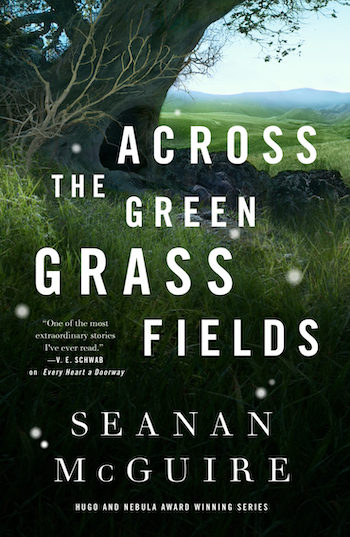

Across the Green Grass Fields
And yet, even while the modern mainstream unicorn has been coated in rainbow sugar, the bloodthirsty antidote harks straight back to the original beast. If the traveler’s tale that spawned some of the ancient versions is in fact based on the rhinoceros, the idea of a dangerous animal that has to be hunted in self-defense has a certain persuasive logic. Rhinos are big, powerful, and have terrible vision. They charge first, ask questions later.
And yet the real rhinoceros is not nearly so evil or violent as legend makes it. Baby rhinos are frankly adorable, bouncy and playful and utterly charming. They grow into armored tanks, but they aren’t randomly violent and they can be amazingly gentle when they don’t feel threatened.
There’s a lesson there for us humans. The image of the unicorn tamed by the gentle (and treacherous) virgin has a lot to do with Western medieval attitudes toward sex, violence, and the natural world. But it also says something about the power of gentleness and understanding—something that animal trainers have been emphasizing more and more over the years.
If you attack an animal, it will naturally fight back. If you approach it softly, without aggression, and paying attention to what it’s telling you, it may lay its head in your lap. Or at least, if it warns you not to even think about it, you’ll get away safely while it goes on about its business.
Judith Tarr is a lifelong horse person. She supports her habit by writing works of fantasy and science fiction as well as historical novels, many of which have been published as ebooks. She’s written a primer for writers who want to write about horses: Writing Horses: The Fine Art of Getting It Right. She lives near Tucson, Arizona with a herd of Lipizzans, a clowder of cats, and a blue-eyed dog.










